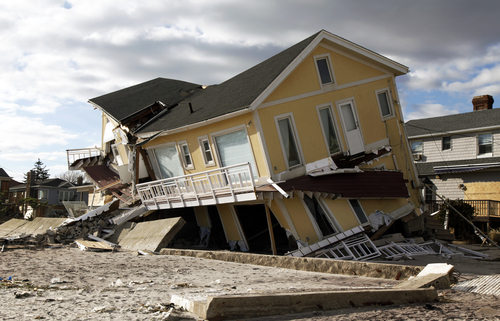The day after Thanksgiving has become the high-profile shopping of the year.
From unbelievable deals to special promotions, retailers across the country try to pack in as many customers as they can and move as many units as possible. It’s all about volume and the stores that can scan the most transactions are those that get the most rewards.
But such plans can create major safety hazards that lead to consumer injuries, major lawsuits and severe reputational damage. To shed some light on what stores can do to make sure their Black Fridays are remembered for revenue not regret, I emailed Kelly Brown, the retail/wholesale industry practice leader for Zurich Services Corporation, to ask the following questions.
What is the biggest risk retailers face on Black Friday?
Kelly Brown: A fatality or violent incident that would make national news. Damage to reputation and potentially a large workers compensation or general liability claim.
What types of safety and security issues should every store be sure to address?
Brown: Throughout its 100 years of insuring America, Zurich has helped identify and assess the types of risks to help keep retailers profitable and customers safe. Stores should be sure to address the following issues on Black Friday.
- Crowd control: Realize ads or celebrity events may create “door buster” activity. Have a plan in place.
- Provide adequate security or police protection. Control the crowd through physical set up, use of stanchions, tickets or rain checks.
- Communicate with the crowd to keep control. Customers should enter buildings single file and be advised not to run through the store.
- Identify a manager (or managers) to be notified in the event of problem customers in order to properly de-escalate the situation.
- Provide sound customer service at point of sale. Have experienced teams in place to ring up sales and bag merchandise. Ensure cash and wraps are properly signed and stanchions are utilized when appropriate to direct customers.
- Review emergency response plans. Respond promptly to employee and customer incidents.
online pharmacy bactroban with best prices today in the USA
- Ensure fitting rooms are safe and secure, and furniture, mirrors and doors are in good condition and function properly.
- Keep rolling racks and other material handling equipment off the sales floor to prevent customer incidents.
- Ensure exits and aisle ways are clear of storage. Emergency exits do not have storage and are not locked. Doors open when panic hardware is activated.
- Parking lot lighting should be adequate. Lighting timers should be adjusted to come on at dusk and turn off at sunrise.
online pharmacy stendra with best prices today in the USA
- Have a see it, fix it approach. All employees should be working to eliminate slip, trip and fall hazards all hours of the day.
- Incidents or accidents cost money and take away profits. Plan ahead and work to reduce customer and employee incidents.
Have there been any serious legal or insurance claims related to Black Friday?
Brown: Yes. Family members of the employee who was fatality injured in 2008 have filed a wrongful death suit. There are numerous lawsuits each year as a result of persons getting injured during Black Friday openings or getting into conflicts with others over highly desirable merchandise.
What one piece of advice do you have for any store trying to exploit the sales opportunities while avoiding the risks?
Brown: Retailers need to realize Black Friday deals could literally create “door busters.” Have a plan in place.



